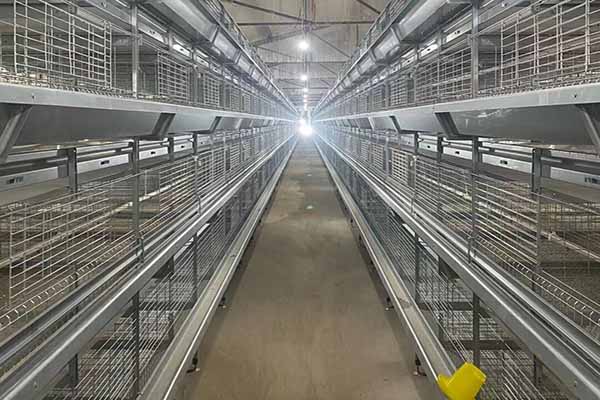Layer Battery Cage System for 200,000 Chickens in Nigeria: A Comprehensive Guide
Introduction
In the poultry industry, efficient and scalable farming solutions are crucial for maximizing production while minimizing costs. For a chicken farm in Nigeria housing 200,000 chickens, a robust layer battery cage system is essential. This article explores the design, benefits, and implementation of a layer battery cage system tailored for a farm of this size.
System Design
A well-designed layer battery cage system for 200,000 chickens should consider the following factors:
- Space Allocation: Ensure each chicken has ample space for movement and comfort. A typical cage size for laying hens is around 3-4 square feet.
- Egg Collection: Implement an automated egg collection system to minimize manual labor and maintain hygiene.
- Feeding System: A programmable feeding system that delivers consistent rations throughout the day.
- Environmental Control: Temperature, humidity, and air quality must be carefully managed to ensure optimal health and productivity.
- Water Supply: A reliable water supply with regular maintenance to prevent diseases.
For a farm of 200,000 chickens, the layout might include multiple rows of battery cages, each containing a set number of cages. The system should also incorporate walkways and access points for maintenance and observation.
Benefits of a Battery Cage System
The use of a layer battery cage system offers several advantages:
- Improved Egg Quality: By providing a controlled environment, battery cages contribute to healthier hens and thus higher-quality eggs.
- Increased Production: With automated systems in place, farmers can expect a consistent and higher egg yield.
- Cost Efficiency: Although the initial investment is significant, the long-term savings from reduced labor and improved productivity can be substantial.
- Health Management: Battery cages make it easier to monitor the health of the flock and implement preventive measures.
Case Study
A Nigerian poultry farm, with the help of our expert team, successfully implemented a layer battery cage system for 200,000 chickens. The system included:
– 5,000 battery cages
– Automated egg collection
– Automated feeding system
– Advanced environmental control units
– Continuous water supply
Within a year, the farm saw a 30% increase in egg production and a 20% decrease in disease-related mortality.
Conclusion
A layer battery cage system for 200,000 chickens in Nigeria can be a game-changer for poultry farmers and investors. By choosing the right system and design, farmers can maximize production, reduce costs, and ensure the health and well-being of their flock.
For a detailed analysis and free design consultation for your farm, contact us today.
<img src="http ://www.qualitychickenfarm.com/wp-content/uploads/2025/05/cost-of-building-a-chicken-layer-house-in-zambia-14.jpg” alt=”inserted image”>
://www.qualitychickenfarm.com/wp-content/uploads/2025/05/cost-of-building-a-chicken-layer-house-in-zambia-14.jpg” alt=”inserted image”>




